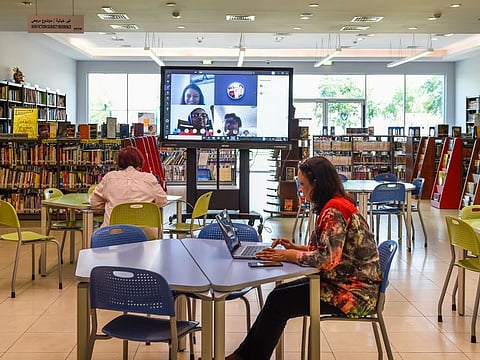Learning has a new benchmark to deal with
Blended education is what institutions need set course for

Also In This Package
Millions of educators and learners have had to make a sudden shift to remote learning after the COVID-19 outbreak. And the education community as a whole worked tirelessly to make this transition possible in spite of a severely compressed timeframe. But the question is, how will this emergency immersion into online learning affect the outlook for education once the pandemic subsides?
While day-to-day life will perhaps return to normal at some point, for education there will have to be a new one. Learners will now expect to be able to seamlessly switch between in-person and virtual formats. And they will continue to expect the quality education they have paid for — one that will best prepare them for the next stage of their lives.
Educational institutions, too, now recognise online education as pivotal to institutional resilience and academic continuity. Digital teaching and learning has become a strategic priority.
The Middle East’s ministries of education are encouraging schools and universities to embrace hybrid models, particularly as they consider the possibility of extending distance learning into the next academic year. Here are some of the ways in which the pandemic has changed the future of education...
Blended learning
Institutions were already experimenting with varying degrees of digital learning before the pandemic. But they will return from COVID-19 with a widely shared understanding that digital tools can be highly complementary to face-to-face learning, and that teaching and learning with asynchronous and synchronous platforms can yield significant benefits when layered in with face-to-face instruction.
This hybrid model of in-person lessons and distance learning, known as blended learning, will become one of the key models for post-pandemic pedagogy. It facilitates flexibility, increases accessibility, allows faculty to track and improve student engagement, boosts student retention, enhances communication as well as peer support, enables personalisation and competency-based learning, and can be cost-effective while scaling up efficiency.
Technical fluency
There are two complimentary approaches to online teaching and learning: one is to build a robust infrastructure of relevant platforms and technologies, and the other is to invest in faculty development and support. One of the greatest challenges in the abrupt transition to fully remote learning during the pandemic was the lack of fluency in the tools of teaching online.
When they come back after COVID-19, many institutions will take stock of the faculty developments processes they have in place. The role of faculty is to engage students with the course and to guide their learning regardless of the teaching modality. Investing in technology in and of itself is never enough — it has to accomplish certain pedagogical objectives.
For this, educators need access to continuous professional development opportunities. So after the pandemic, institutions will invest in teacher training and also in creating centralised units to support faculty development efforts.
Course design
In the rush to take them online, many courses were quickly built to mimic or retrofit them to face-to-face sessions. This approach does not necessarily maximise the many possibilities presented by digital learning. A more productive approach is to start with the question, “What do my students need to learn?” and accordingly tailor course delivery, activities and assessment methods to this line of thinking.
Courses will likely be designed and even remediated to better suit digital learning. In general, courses need regular revamping to stay abreast of latest research and to properly leverage the latest innovations in education technology. Evaluation and assessment methods will also need to be revised to become untethered from the physical location of students.
Programmatic assessment, for example, takes into account multiple pieces of work and feedback and uses these as a measure of student success rather than their scores from a single exam.
Data-driven
Online teaching and learning tools have dramatically aided student engagement in the time of COVID-19, and these will continue to be leveraged to drive learner interest and active participation well beyond. In addition to significantly boosting interactivity and collaboration between students, these tools can also provide learner analytics.
Data-driven insights enable new ways to engage students, increase enrolment and improve retention and completion rates. They can identify at-risk students, optimise assessments, promote reflection and self-regulated learning, establish feedback loops and even boost faculty development.
Upon return, educational institutions will increasingly use data and learner analytics as a base for making strategic decisions and to boost overall student enrolment, engagement and retention.
- Robert Speed is Vice-President for the Middle East and Africa at Blackboard.
Sign up for the Daily Briefing
Get the latest news and updates straight to your inbox









